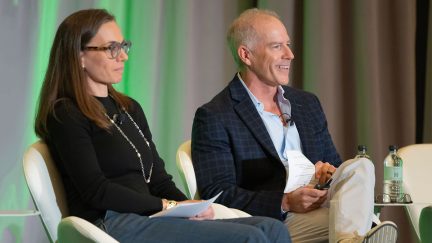For more stories like this, sign up for the PLANADVISERdash daily newsletter.
Helping Participants Plan Their Distributions
Retirement plan sponsors should be thinking about the education gap for retirement plan participants, noted Jeffrey R. Capwell, partner at McGuire Woods LLP.
The gap occurs because most participants have some level of access to savings and investment-related education through their employer-sponsored retirement plans. Once the time comes to take distributions from their plans, however, they no longer have access to the same level of information and typically have to pay for any information they get, Capwell explained to attendees of the 44th Annual Retirement & Benefits Management Seminar, hosted by the Darla Moore School of Business at the University of South Carolina, and co-sponsored by PLANSPONSOR.
Should plan sponsors provide access to information after someone has left employment or should they decide they have no more obligation once an employee is gone? According to Capwell, plan sponsors should think about what is appropriate for them from a business perspective. It may not be the right answer for everyone.
“But if not from plan sponsors, where will participants get the information from?” he queried. “I think there’s a place for employers in the process to provide some very helpful information about distribution and ultimate drawdown of balances. I think we might see some market changes in that regard.”
One consideration for plan sponsors, according to Phyllis E. Klein, senior director of the Consulting Research Group at CAPTRUST Financial Advisors, is whether they want the balances of terminated participants to remain in the plan. It may boost the plan’s asset level and ability to negotiate to get lower administration and investment fees, she noted.
Plan sponsors should also consider whether they are comfortable communicating choices to participants or whether they want someone to do that for them, Klein said.
Capwell warned that plan sponsors must do due diligence on the contracted provider of education or advice, and make sure they know what advice is being given. If something goes wrong, it could come back on plan sponsors as fiduciaries. “You have to be careful the service does not in any way offer a way for an adviser to make money by selling a product or recommending certain investment vehicles,” he said.
Klein pointed out that many plans offer only lump-sum distributions to retiring or terminating participants. “You can’t talk about lifetime income without providing options,” she told seminar attendees. Plan sponsors should consider amending their plans to allow for installments, systematic payments or periodic distributions. “If you only allow lump sums, you’re casting participants into the IRA [individual retirement account] world no matter the cost. If you offer more options, you can at least help them bridge their way into retirement income,” she said.
Holly Harn, senior director of Human Resources at Savannah College of Art and Design, shared her experience as a plan sponsor. Realizing that the type of questions retiring plan participants were asking were those the college shouldn’t answer because the staff are not investment professionals, it hired CAPTRUST in 2010 to educate employees. The college and CAPTRUST offered one-on-one sessions for participants. “CAPTRUST is an independent firm, so they are not selling any product, but looking out for employees’ best interests,” Harn noted.
The college also provides impact statements or gap analyses to participants. “We don’t do it every year because we don’t want employees to get so used to seeing it that they ignore it,” Harn said. The tools tell participants whether they are on target to replace an appropriate amount of income in retirement or not, and include a check box to schedule a one-on-one advice session.
These efforts not only help participants, but also protect plan sponsors from participants who claim they weren’t prepared, Harn said.
You Might Also Like:

Rethinking Opportunities for RIA Growth

Plan Fiduciaries Compare Annuities in Subscription-Based ‘Hub’
